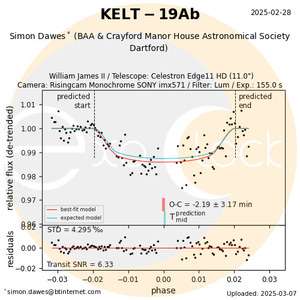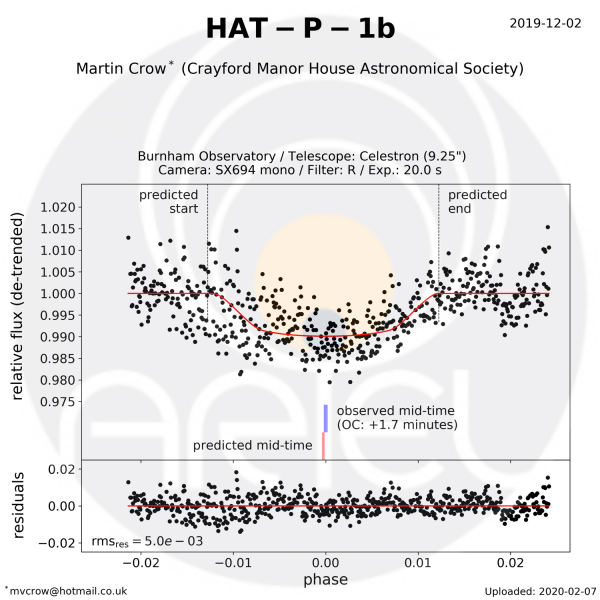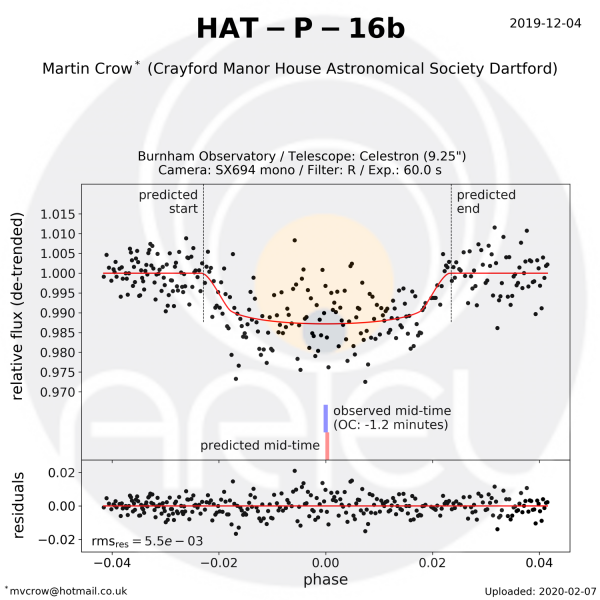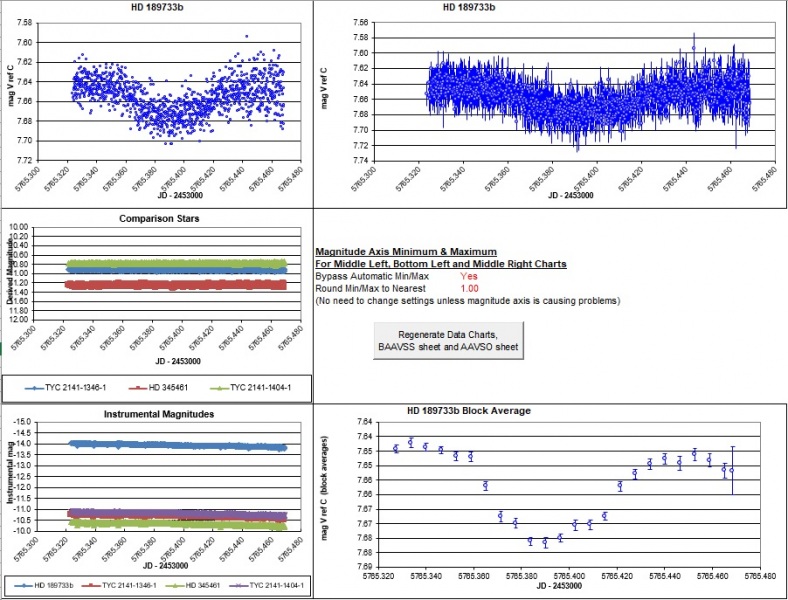Below are the latest Exoplanet Transit observations carried out by CMHASD member and trustee Simon Dawes for the ExoClock project.

TOI-1259 A b is a gas giant exoplanet that orbits a K-type star. Its mass is 0.441 Jupiters, it takes 3.5 days to complete one orbit of its star, and is 0.0407 AU from its star. Its discovery was announced in 2021. Ref: https://science.nasa.gov/exoplanet-catalog/toi-1259-a-b/

HAT-P-56 b is a gas giant exoplanet that orbits an F-type star. Its mass is 2.31 Jupiters, it takes 2.8 days to complete one orbit of its star, and is 0.0423 AU from its star. Its discovery was announced in 2015. Ref:https://science.nasa.gov/exoplanet-catalog/hat-p-56-b/

Qatar-9 b is a gas giant exoplanet that orbits a K-type star. Its mass is 1.19 Jupiters, it takes 1.5 days to complete one orbit of its star, and is 0.0234 AU from its star. Its discovery was announced in 2019. Ref:https://science.nasa.gov/exoplanet-catalog/qatar-9-b/

Qatar-8 b is a gas giant exoplanet that orbits a G-type star. Its mass is 0.371 Jupiters, it takes 3.7 days to complete one orbit of its star, and is 0.0474 AU from its star. Its discovery was announced in 2019. Ref:https://science.nasa.gov/exoplanet-catalog/qatar-8-b/

WASP-92 b is a gas giant exoplanet that orbits an F-type star. Its mass is 0.805 Jupiters, it takes 2.2 days to complete one orbit of its star, and is 0.0348 AU from its star. Its discovery was announced in 2016. Ref: https://science.nasa.gov/exoplanet-catalog/wasp-92-b/





















